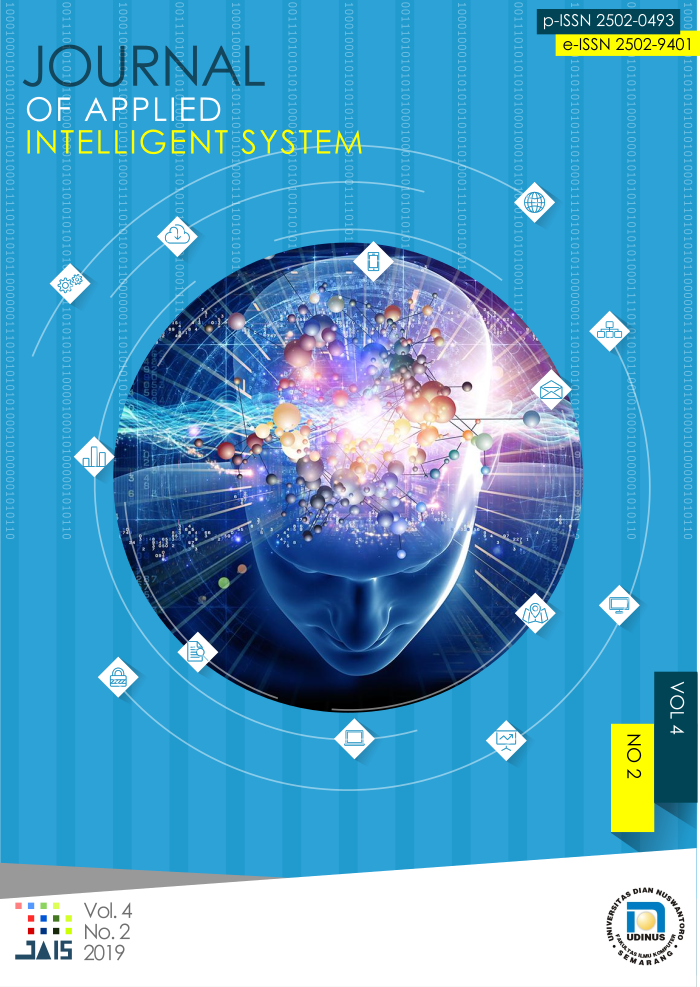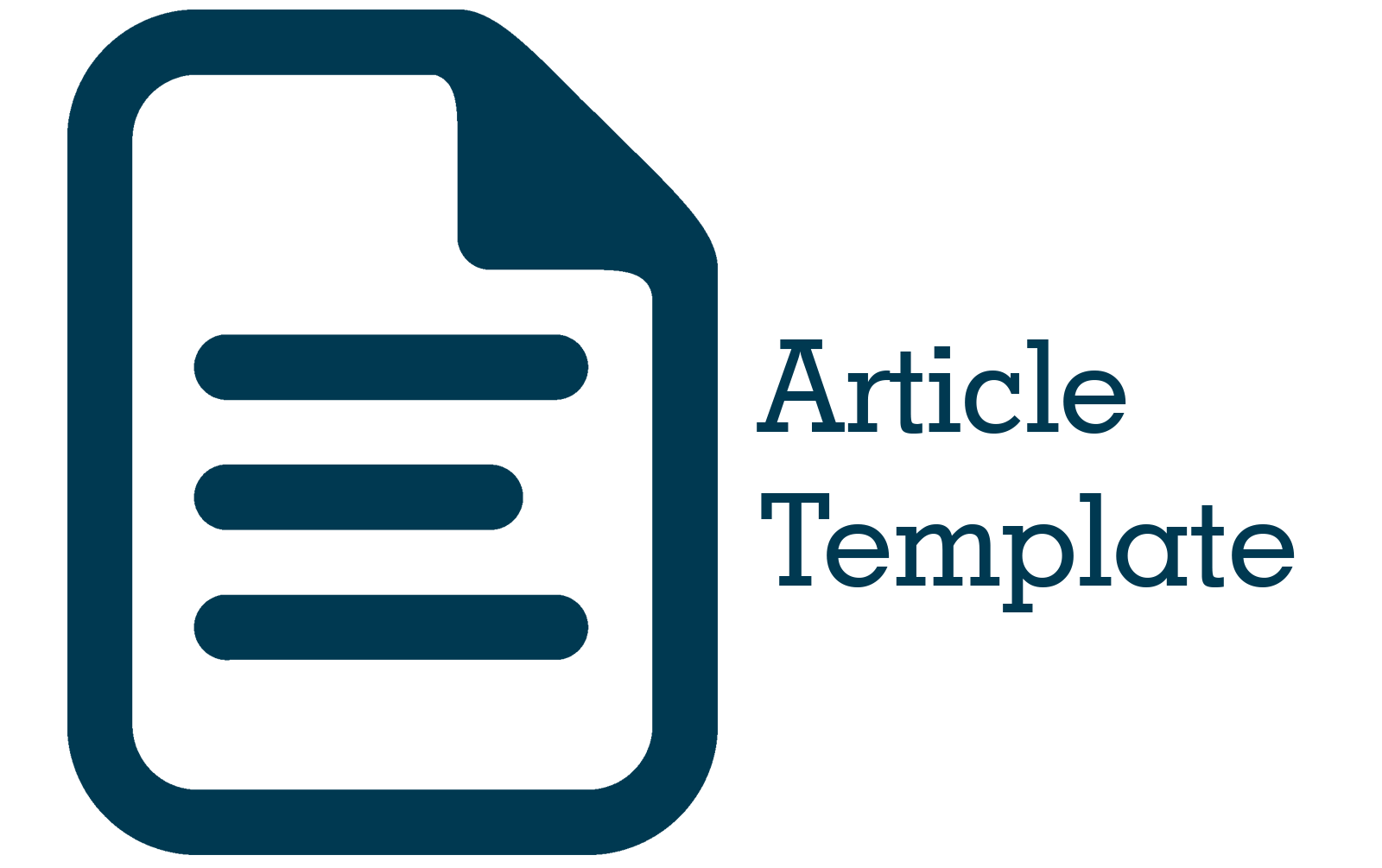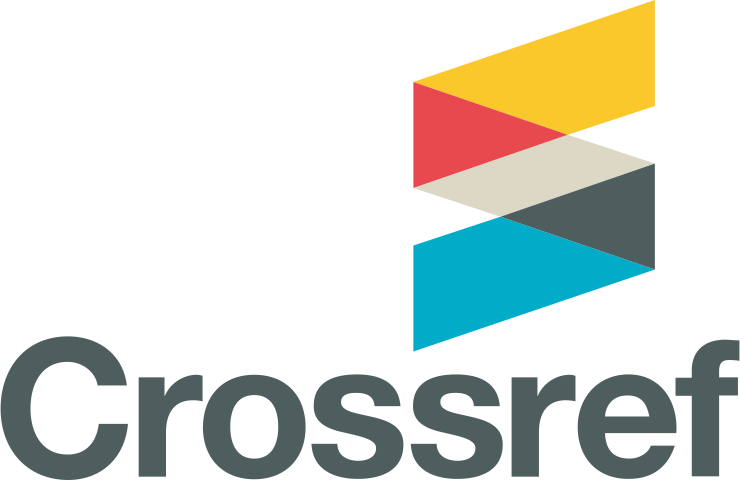Cataract Disease Diagnosis System Using Artificial Neural Network Learning Vector Quantization Method
DOI:
https://doi.org/10.33633/jais.v4i2.3089Abstract
Artificial Neural Network (ANN) is an information processing system that has certain performance characteristics that are artificial representatives based on human neural networks. ANN method has been widely applied to help human performance, one of which is health. In this research, ANN will be used to diagnose cataracts, especially Congenital Cataracts, Juvenile Cataracts, Senile Cataracts and Traumatic Cataracts based on the symptoms of the disease. The ANN method used is the Learning Vector Quantization (LVQ) method. The data used in this research were 146 data taken from the medical record data of RSUD Dr. M. Haulussy, Ambon. The data consists of 109 data as training data and 37 data as testing data. By using learning rate (α) = 0.1, decrease in learning rate (dec α) = 0.0001 and maximum epoch (max epoch) = 5, the accuracy rate obtained is 100%.References
Lubis R. R, Megawati E. R, Lubis D. L. Identifikasi Kelainan Mata dan Koreksi Tajam Penglihatan Presbiopia. ABDIMAS Talenta Universitas Sumatera Utara. 2016; 1 (1): 13–19.
de-Wit L, Wagemans J. Visual Perception. Encyclopedia of Human Behavior. Second Edition. 2012: 665-671.
Faizal E. Case Based Reasoning Diagnosis Penyakit Mata. Jurnal Teknologi Informasi dan Ilmu Komputer. 2012; 10 (2): 26–37.
Zulfikar W. B, Lukman N. Perbandingan Naive Bayes Classifier Dengan Nearest Neighbor Untuk Identifikasi Penyakit Mata. Jurnal Online Informatika. Dec 2016; 1 (2): 82–86.
Lambert S. R, Drack A. V. Infantile Cataracts. Survey of Ophthalmology. 1996; 40 (6): 427-458.
Rasyid1 H. A. Z. A. R, Nawi R. Summary for Policymakers. Climate Change 2013 - The Physical Science Basis. Intergovernmental Panel on Climate Change. Edition Cambridge: Cambridge University Press. 2010: 1–30.
Lee C. M, Afshari N. A. The Global State of Cataract Blindness. Current Opinion in Ophthalmology. 2017; 28 (1): 98-103.
Martono G. H, Eng M, Agrippina S, Yusuf A. Diagnosa Penyakit Katarak Senilis Dengan Menggunakan Metode Case Based Reasoning ( Cbr ) Berbasis Web. 2016: 6–7.
Nasri. Kecerdasan Buatan ( Artificial Intelligence ). Artif. Intell. 2014.
Fausett L. Fundamentals Of Neural Network Architectures, Algorithms, and Applications. Inc., New Jersey. 2017.
Itchhaporia D. Artificial Neural Networks: Current Status in Cardiovascular Medicine. Journal of the American College of Cardiology. 1996; 28 (2): 515-521.
Kumar K, Abhishek A. Artificial Neural Networks for Diagnosis of Kidney Stones Disease. International Journal of Information Technology and Computer Science. 2012; 4 (7): 20-25.
Ganesan N, Venkatesh K, Rama M. A, Palani A. M. Application of Neural Networks in Diagnosing Cancer Disease using Demographic Data. International Journal of Computer Applications. 2010; 1 (26): 81-97.
Widyawati K, Setiawan B. D, Adikara P. P. Optimasi Vektor Bobot Learning Vector Quantization Menggunakan Algoritme Genetika untuk Penentuan Kualitas Susu Sapi. Jurnal Pengembangan Teknologi Informasi dan Ilmu Komputer (J-PTIIK) Universitas Brawijaya. 2017.
Kohonen T. Learning Vector Quantization. Neural Networks, Jan 1988; 1: 303.
Ladauw E. B, Ratnawati D. E, Supianto A. A. Identifikasi Penyakit Mata Menggunakan Metode Learning Vector Quantization ( LVQ ). Jurnal Pengembangan Teknologi Informasi dan Ilmu Komputer. 2018; 2 (12): 6989–6996.
Sabrina E. Klasifikasi Penyakit Diabetic Retinopathy menggunakan Metode Learning Vector Quantization (LVQ). Jurnal Teknik Elektro. 2017; 6 (2).
Pahlevi M. K, Setiawan B. D, Afirianto T. Identifikasi Gangguan Kepribadian Dramatis Menggunakan Metode Learning Vector Quantization (LVQ). Jurnal Pengembangan Teknologi Informasi dan Ilmu Komputer. 2018; 2 (9): 3103–3111.
Downloads
Published
Issue
Section
License
- Authors retain copyright and grant the journal right of first publication with the work simultaneously licensed under a Creative Commons Attribution License that allows others to share the work with an acknowledgment of the work's authorship and initial publication in this journal.
- Authors are able to enter into separate, additional contractual arrangements for the non-exclusive distribution of the journal's published version of the work (e.g., post it to an institutional repository or publish it in a book), with an acknowledgment of its initial publication in this journal.
- Authors are permitted and encouraged to post their work online (e.g., in institutional repositories or on their website) prior to and during the submission process, as it can lead to productive exchanges, as well as earlier and greater citation of published work (See The Effect of Open Access).









